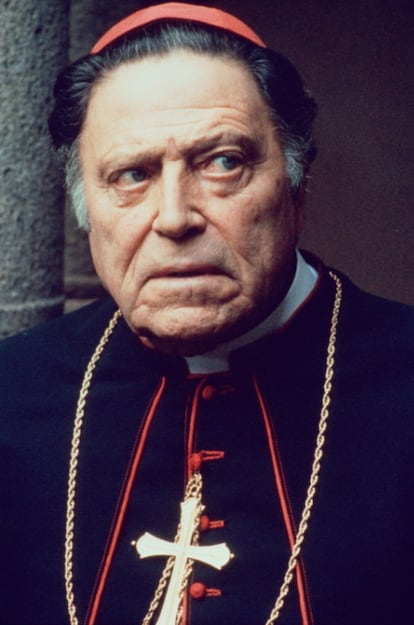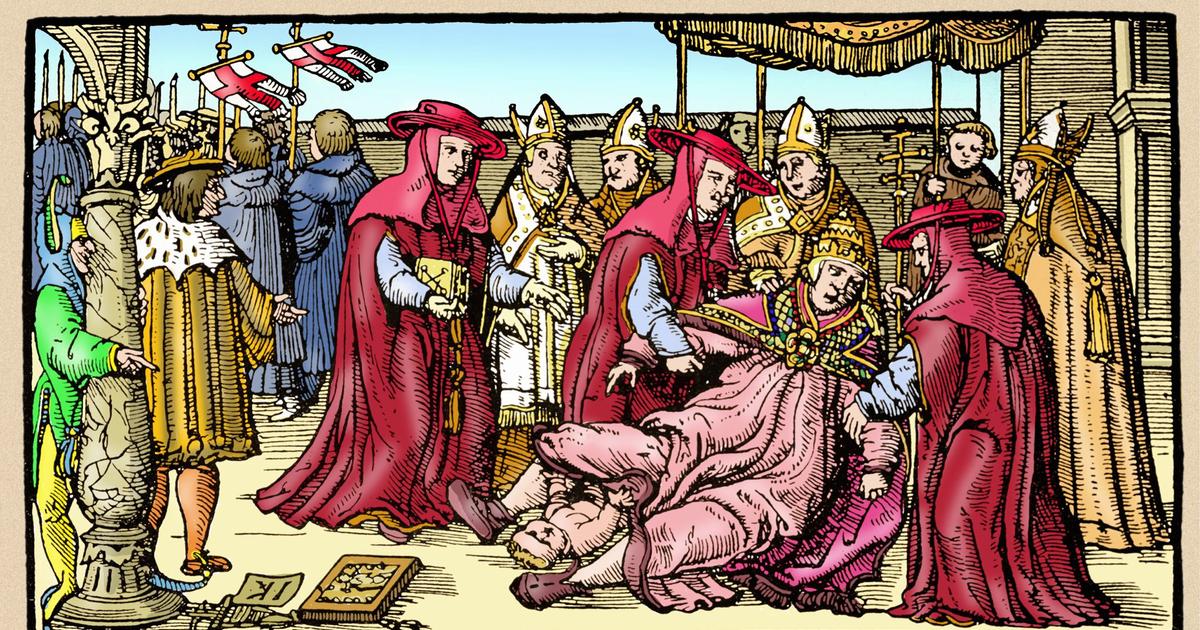Like every morning for 32 days, the nun Vincenza Taffarel left the cup of coffee in the sacristy so that Albino Luciani would find it when he woke up at dawn on that September 29, 1978. After a few minutes, around five twenty , went back and noticed that the infusion was still intact.
The nun then entered the papal bedroom and found him with the light still on from the night before, his glasses on and some papers that she had been reading in bed (some versions suggest that it was
The Imitation of Christ
).
Nobody was prepared for that.
Nor so that it was a woman who entered the bedroom of a Pope and found his corpse, with the rumors that she could unleash.
But the remedy was worse.
The Vatican launched a historic communication disaster, invented several versions and refused to do an autopsy on Luciani, one of the most fleeting pontiffs in the history of the Church.
A story that fueled novels, essays and movies for decades and now returns in the form of beatification (with a miracle included).
Starting today, John Paul I will be elevated to the altars, the last frontier before attaining sainthood.
He will be the fifth pontiff of the 20th century to do so, after Pius X, John XXIII, Paul VI and John Paul II.
Luciani's death (Canale d'Agordo, 1912- Vatican City, 1978) was not foreseeable, but neither was his arrival at the chair of Peter.
On August 26, 1978, he entered the conclave without the favorite sign and emerged converted by the Holy Spirit —and a certain earthly disagreement over the other two favorite names— into Pope after only four votes on the same day.
His pontificate, which was to be marked by a profound reform of Vatican finances, lasted 33 days and his death, presumably from a heart attack, was surrounded by legends, myths and a long list of movies and books that his postulators now describe as
fake .
news
.
The reality is that Luciani, appointed at the age of 66 and become the last Italian pope, was unwell that night.
His secretary, Diego Lorenzi, suggested alerting the doctor.
But the Pope, the reconstructions indicate, preferred not to disturb.
“Before going to bed, he sent for the Archbishop of Milan, Cardinal Colombo.
They discussed the succession in Venice, a position he had left vacant.
They had a long conversation, they disagreed on the name.
He retired to his room, and little more can be known.
He suffered such a severe heart attack that he did not even have time to ring the doorbell at his bedside”, recalls Giovanni Maria Vian, Church historian, former director of
L'Osservatore Romano
and author of the book
John Paul I, the Pope Without a crown.
Life and death of John Paul I (BAC, 2022)
.
A complete and illustrative volume on all facets of Luciani, with the contribution of different authors such as Juan Manuel de Prada, who reflects on papal fantasies.
The actor Raf Vallone in 'The Godfather III' (1990).
The myth of John Paul I, who chose his name in honor of his two predecessors, is the fruit of those 33 days.
But also of a stormy year in which Saint Peter's Square saw three different popes appear from the balcony of the Apostolic Palace (Paul VI, John Paul I and John Paul II) and of a convulsive time in which the world gave the impression of beginning to crack for Italy.
Former Prime Minister Aldo Moro had been kidnapped and assassinated three months earlier and the sewers of the State became a storm that led to political attacks, mafia and war in the secret services.
The Vatican, of course, was not spared.
“The fact that he died a month after being elected is very impressive.
From a supernatural perspective leads to reflection.
If you are a believer, you think about how God could allow the vicar of Christ to die.
But from another point of view it is impossible not to think that this death was caused by dark forces.
And so everything leads to inevitable speculation.
It is a very convulsive period in the history of the Church and the world”, recalls Prada.
Among the fantasies that the Spanish writer recalls is the imprecise
Death in the Vatican
, by Maurice Serral and Max Savigny (later a film was also made), or the novel
The Pope's Guest (The Mute Ox, 2011)
, by Vladímir Volkoff.
A book that recovers a strange chapter in which Metropolitan Nikodim died in Luciani's arms while visiting him in the Vatican on September 5, 1978, in full tension between the West and the Soviet Union.
The Archbishop of Leningrad, only 49 years old, had insisted a lot on meeting John Paul I and his death also opened up all kinds of speculation.
Luciani was a hinge between two worlds.
But the crack that opens with each change of time usually gives rise to perfect storms.
Antonio Gramsci launched the ad at the beginning of the century.
“The old world is dying, the new world is slow to appear.
And in that chiaroscuro the monsters arise”.
And in this case it could be three characters like Roberto Calvi —director of the bankrupt Banco Ambrosiano who appeared hanging from a bridge over the Thames in London and who was nicknamed the Banker of God— or the American bishop Paul Marcinkus, then president of the Vatican Bank ( main shareholder of Banco Ambrosiano, whose bankruptcy exposed a huge political scandal).
The cardinal was at the center of great controversy and was known for his sincere management idea: "The Church is not governed by Hail Marys."
But also Licio Gelli,
The Godfather III
, perhaps the work that best reconstructs that period.
Coppola articulates the film around that period of transition in the Church —and the world— in which the new Pope is called to put Vatican finances in order —as Francis has also proposed, who has some points in common with Luciani — and in the real estate network of the Holy See.
Until someone decided that 33 days had been enough.
The writer and film critic Emilio Ranzato, also co-author of
The Pope without a Crown
, believes that, despite the inevitable artistic license, Coppola's has been the most faithful portrait.
“The most interesting thing is that when the film came out in 1990, we Italians didn't have that vision of Italy.
But you see it now, aware of what our recent history was, with all the intrigues that took place around Banco Ambrosiano, and the majority of Italians believe what the film tells.
Issues such as Roberto Calvi not committing suicide and being assassinated... And he believes, above all, that hidden forces liquidated a certain way of operating in the Vatican that, out of ingenuity, had thrown itself into the arms of dangerous characters.
The Godfather III
It is not only faithful, but it anticipates a vision that we share today.”
shame disappears
The cinematographic work around Luciani, who came to the papacy after being Patriarch of Venice, is relatively extensive.
But the most important thing, Ranzato thinks, is that after his death the treatment that the Vatican began to receive on the big screen was different.
“After Luciani's death, the relationship between cinema and the Holy See changed.
Before there was a lot of respect.
Of the artist, the director, the writer with the clergy and their traditions.
After the death of Pope Luciani, all modesty disappears completely.
The directors begin to draw the knife with more mysterious aspects or corruption.
Always with stories that have to do with homicides, mysteries… The Vatican began to be represented in a disturbing way.”
The shadows surrounding her death, however, were all but lifted in 1989, when British journalist John Cornwell planted himself in Rome to investigate an apparition of the Virgin Mary in Yugoslavia and ended up being asked to write the truth about the death of Juan Pablo I. The journalist had access to the pontiff's doctor, his embalmers and other people related to the event.
The result was
like a thief in the night
(Aguilar, 1989), the portrait of what Cornwell considered rather a neglect and inattention to a Pope that was often made fun of in the corridors of the Vatican and compared to Peter Sellers for his alleged clumsiness.
“There is no doubt about his natural death.
But he was abandoned by his environment, ”says Vian.
The postulators of the cause for his beatification think the same about his death, of course.
And Ranzato himself.
“There was a certain bad mood about his choice.
But even at a practical, organizational level, I see it as complicated.
What many think is that he was a sick person and that night, when he was sick, no one ran to save him.
He is now just one step away from being a saint.
50% off
Subscribe to continue reading
read without limits
Keep reading
I'm already a subscriber




/cloudfront-eu-central-1.images.arcpublishing.com/prisa/5TFPBNFGRJCZBAAII3KP537NEY.jpg)


